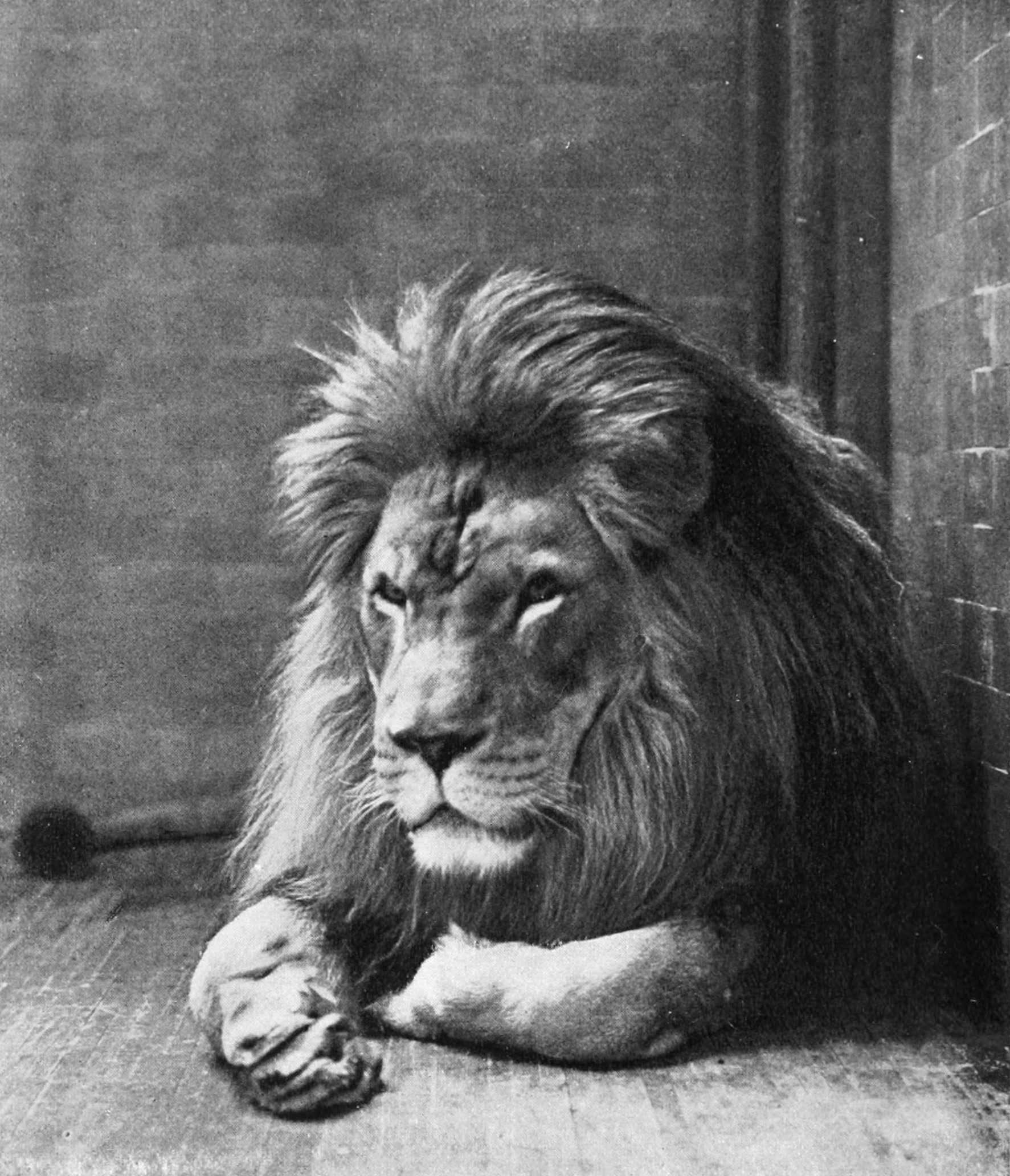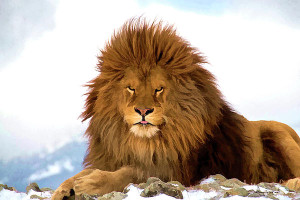Barbary lion
Barbary lion (Panthera leo leo)
The Barbary Lion, Atlas lion or Nubian lion ( Panthera leo leo ) is a subspecies of the lion. It was originally native to North Africa and is now extinct in the wild. Some lions now live in captivity are likely to include Barbary lions, but completely pure-bred animals are probably not among them. This subspecies was Carl Linnaeus in 1758 for the classification of the lion (Panthera leo), making it the nominotypical taxon ( " nominate ") of this Article
Features
With a weight of males 181-295 kg and females 120-181 kg of the Barbary lion was next to the extinct Cape Lions the most recent subspecies of lion. The most striking feature of the adult male was particularly strong, dark mane that stretched far across the shoulders and belly hanging down like a curtain.
History and distribution
The Barbary lion inhabited in historic times until the entire north of the continent of Africa north of the Sahara. He was often used in the Roman arenas where he fought against the Caspian Tiger, which is also extinct. For historical sources indicate that he had largely disappeared from North Africa at the beginning of the 18th century and at that time occurred almost exclusively in the Northwest. The spread of firearms and a targeted policy of extermination made sure that the stocks dropped significantly in the western part of its former distribution area until the mid- 19th century. The last living in the wild known Barbary lion in 1920 was shot in the Moroccan part of the Atlas Mountains. The other large predators in North Africa suffered a similar fate. The Barbary Leopard has become very rare and Atlasbär is entirely extinct.
Way of life
The Barbary lion lived next to the North African semi-desert and steppe areas and forests and the Atlas Mountains. In addition to deer and wild boar, the North African subspecies of the hartebeest should have counted his main prey.
Barbary lions in captivity
It was originally assumed that the Barbary lion would be extinct in captivity. However, the Moroccan prince Barbary lions had received from the people of Berber as a loyalty gift, as the animals were already becoming increasingly rare. Those lions that gave the Moroccan King Hassan II in 1970, the zoo of Rabat, will probably go straight back to this lion. The morphology of these lions corresponded almost exactly the historical descriptions of Barbary lions. In 1998, 52 were still alive lions, which go back to the Sultan animals in the zoo of Rabat and at 13 different places in Europe. However, apparently other lion subspecies were bred so that these animals are no longer quite well pureblood. Eleven cats could also be Barbary lions, live in the zoo of Addis Ababa and are descended from lions of Emperor Haile Selassie.
Previously, the phenotype of the Barbary lion was regarded as an indication of its legitimate status as a subspecies. According to recent research, however, the appearance of these animals may also be due to external circumstances. Thus, the thick mane would be an adaptation to the colder environment. Lion to develop regardless of the subspecies dense manes when they are in a colder climate, such as in Central European zoos, live. Genetic studies in 2006 still support the status as a subspecies. Whether the descendants of the Lion of Hassan II but now are pure Barbary lions or not, is still not fully understood.
In various zoos and circuses there are animals that are likely to go back to Barbary lions, albeit highly unlikely to be homozygous. Today, there are varieties that match the external features of the Barbary lion, but probably only wear parts of the genetic material of the subspecies in itself.
End of the 19th century, the London Zoo gave a pure-blooded Barbary lions called Sultan.










